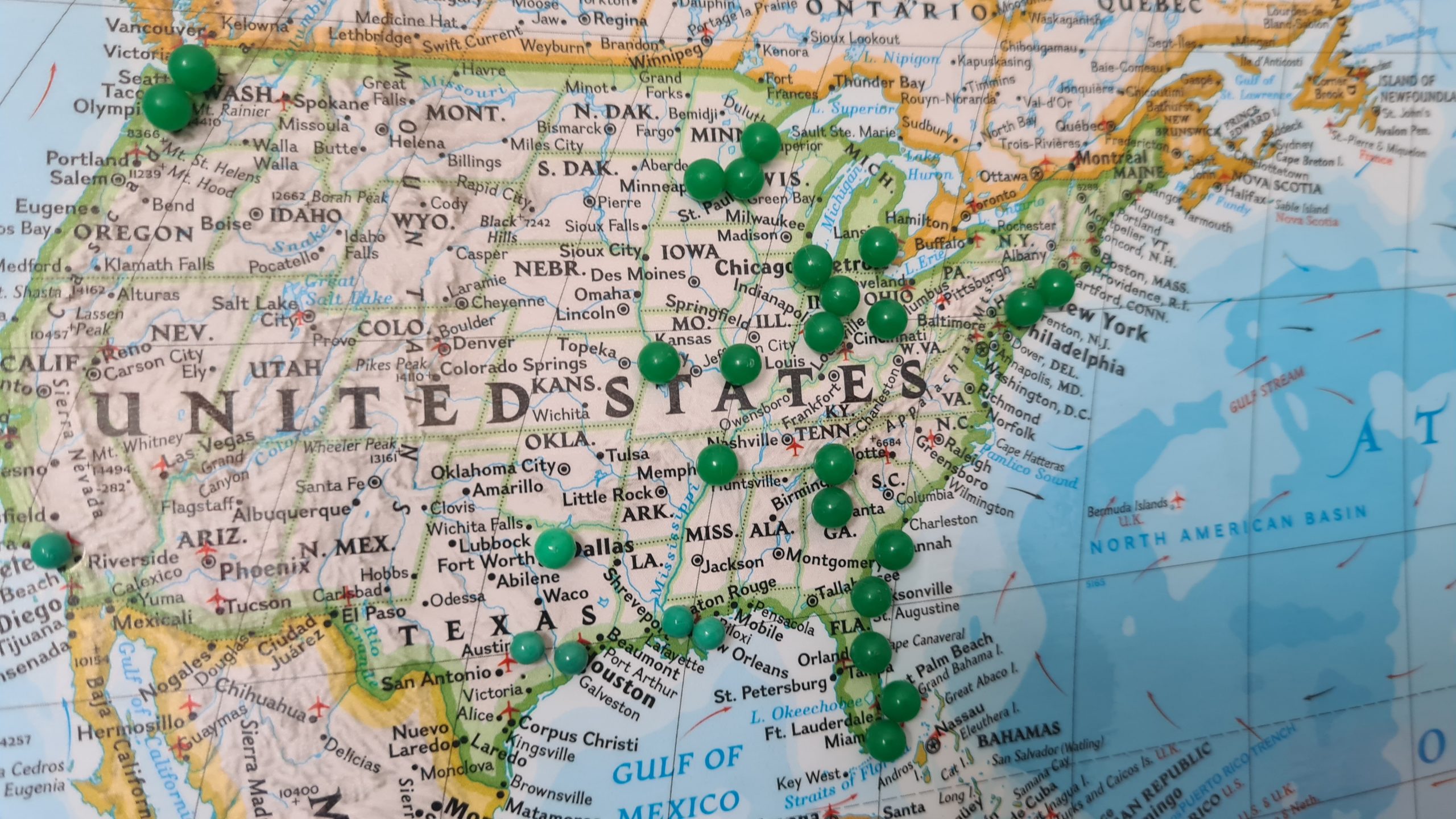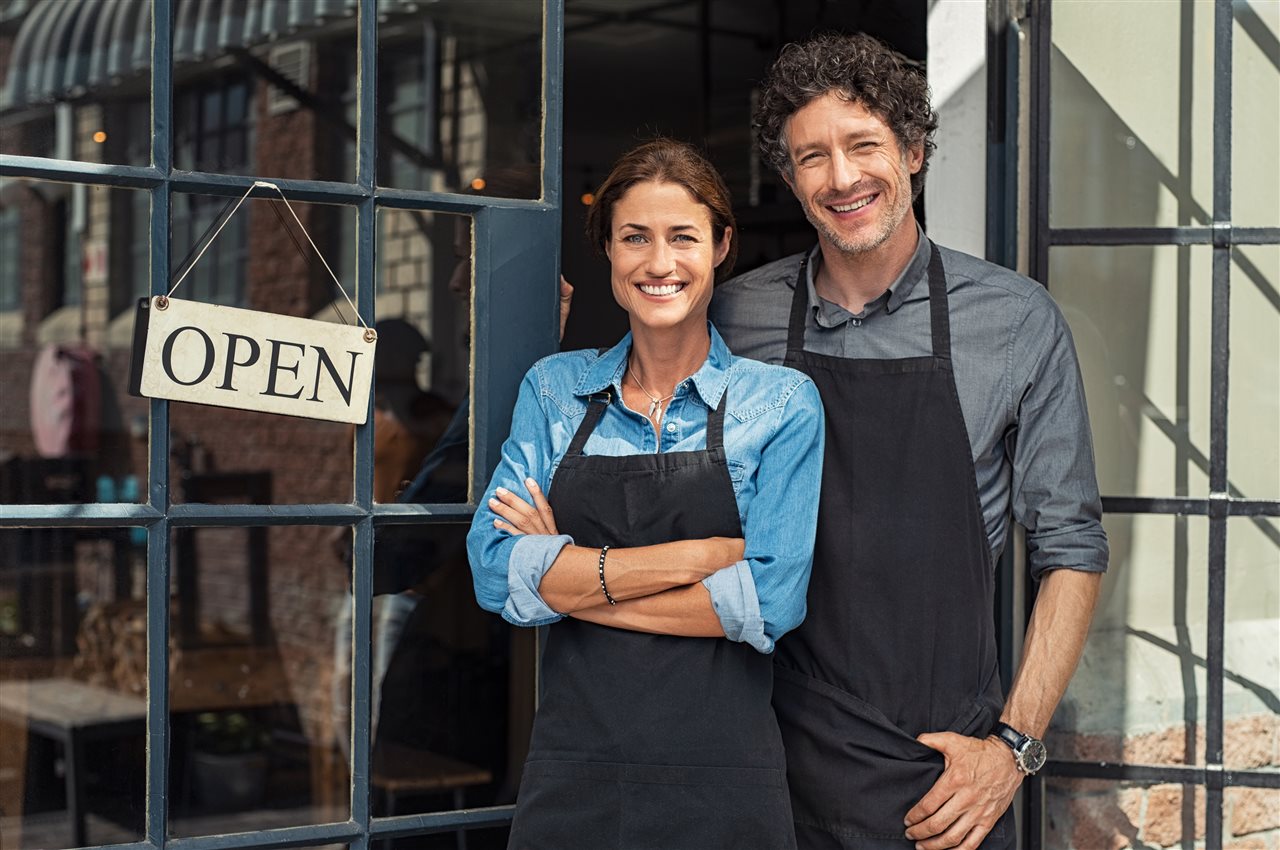An Interview With Tropical Smoothie Cafe’s CEO, Charles Watson
By Gary Occhiogrosso
PHOTO COURTESY OF TROPICAL SMOOTHIE CAFE
CEO Shares His Story & Insights On Taking The Reins.
Amid all the pandemic news and stories of how the foodservice business is coping with the crisis, I thought I’d attempt to redirect our attention today, even if only for a short while. As a 35 year veteran of the restaurant and franchise industry, I have always been fascinated by the challenges, risks, rewards, and day to day “work” a CEO faces when first taking the helm of an ongoing franchise organization. Today’s post focus’ on that topic in an interview with Charles Watson, the CEO of Tropical Smoothie Café.
Mr. Watson was appointed the CEO position of Tropical Smoothie Cafe in December 2018. Since that time, he has led the company on its quest towards $1billion in sales by 2023. He’s no stranger to franchise development, nor is Charles Watson an outsider, having served four years as the company’s Chief Development Officer in addition to his prior role as VP of Franchise Development. He is directly responsible for selling more than 800 franchises.
As their franchise website states: “Tropical Smoothie Cafe’s menu boasts bold, flavorful smoothies with a healthy appeal, all made-to-order with quality ingredients. We find that real fruits, veggies, and juices just taste better.” The offerings have evolved over the years to include a menu of breakfast and lunch items beyond smoothies. From wraps to flatbreads to salads, Mr. Watson continues to solidly position Tropical Smoothie Cafe as a leader in the fast-casual, healthier lifestyle food category.
Gary Occhiogrosso: Tell us a little about your background before joining Tropical Smoothie?
Charles Watson: “Prior to joining Tropical Smoothie Cafe, I worked for several hotel and hospitality-centric companies, including Wyndham Hotels & Resorts, Intercontinental Hotels Group, US Franchise Systems, Inc. and Hospitality Real Estate Counselors. I joined Tropical Smoothie Cafe in 2010 as the Vice President of Franchise Development and, in 2016, became the Chief Development Officer, where I was responsible for all aspects of the development of the brand. In July 2018, I was named interim CEO, and then permanent in December 2018.”
Occhiogrosso: Please give our readers the “Elevator Pitch” for Tropical Smoothie Cafe?
Watson: “Tropical Smoothie Cafe is a national fast-casual cafe concept inspiring healthier lifestyles with more than 850 locations in 44 states. Beyond just smoothies, we serve better-for-you wraps, sandwiches, and flatbreads, and pride ourselves on living at the “intersection of taste, convenience, and hospitality.” In a highly competitive segment, we’re one of the fastest-growing quick-casual brands, opening 124 new locations in 2019 alone and singing 213 development agreements to open hundreds of businesses over the next few years.”
Occhiogrosso: What was the condition of the company before you were named CEO?
Watson: “We were in a good place! In 2018, when I was named CEO, we had more than 720 locations open nationwide. By year-end 2018 we opened 110 cafes and signed 191 new franchise agreements. Building off this momentum, in 2019, we celebrated the openings of our 750th and 800th locations, but taking over during such a monumental time for our brand certainly brought opportunities to improve. Each year, franchisees complete the Franchise Business Review to essentially grade us here at the Support Center on how we’re serving them. We gathered that feedback and used it to set goals and action plans for the company. Areas we wanted to attack immediately with our rapid growth were direct franchisee support as well as technology support and menu innovation. We set company-wide strategic imperatives around these issues immediately.”
Occhiogrosso: What were the one or two unique challenges that you faced upon taking over as CEO?
Watson: “As a first time CEO, learning to view the business from a thinking vs. a doing mentality was a challenge I faced. The success of our brand is about the talent and drive of our talented executives and Support Center team. It was not possible for me to get involved in every project – so I had to learn to let go and delegate. I would say that understanding the viewpoints and drivers of the different stakeholders I was serving was important. A presentation for a board is focused on very different things than a franchisee roadshow. Really trying to understand how to see the world through a different stakeholders’ eyes is something I still work on.”
Occhiogrosso: What was your plan for the first 90 days?
Watson: “I wanted to further instill a franchisee-first mentality. When our franchisees are successful, the brand is successful. When I became CEO, I launched a formal franchisee advisory council, known in our organization as the Tropical Franchisee Council (TFC). While we had always involved franchisees, I felt it needed to be formalized and more visible to our franchise system. In short, franchisees needed to know that there was a formal mechanism of their peers that was constantly feeding back to us at the Support Center. From there, we set up committees, reporting into our TFC, around the major parts of our business, and included more franchisees to provide feedback and work with us on further improving IT, Marketing, Design, and Construction, etc. It was important to me that we have franchisees themselves share their feedback and align on system initiatives and goals. In a franchise system, without broad franchisee buy-in, you cannot move as efficiently and effectively as is required in today’s business environment.”
Occhiogrosso: How is taking the reins of an existing company different than being part of a startup or a founder?
Watson: “I think when taking over any brand where you worked alongside your predecessor, there’s a certain level of pressure to continue carrying the torch, but also to make necessary changes to the brand to evolve with the changing economy and consumer trends. I was lucky enough to work with the founders of the business (and still do as they are board members) as well as work under our first CEO, who did an amazing job. Because 99% of Tropical Smoothie Cafe’s system is franchisee-owned and operated, it was my goal to maintain consistency for them and move the company forward in the right direction, with a lot of reverence and respect for the past. In my case, because I already had nearly a decade with Tropical Smoothie Cafe on the franchise development side, I had the unique advantage of personal relationships with our franchise community. We had a high level of mutual trust and respect for each other that existed before I assumed the role of CEO. I may have been, in fact, the person responsible for awarding them a franchise! My experience with the brand up to that point was beneficial because I was already very immersed in the operations and processes that had contributed to its success at that time. That created a kind of blueprint that served as the foundation for me to take the reins and lead the company the way I felt was best. Yes, I am putting my mark on the brand and culture, but I have been around long enough not to stray too far from the DNA of the brand.”
Occhiogrosso: What challenges, if any, did you face in getting “buy-in” from the existing franchise community once you became CEO? Were any of the franchisees reluctant to follow the system or embrace a new direction?
Watson: “Like I said, I was very fortunate to have had already developed relationships with our franchise community prior to becoming CEO. My predecessor did a great job, so most of the hesitancy candidly was, “will this guy be as good, will we have the same amount of success?” Luckily in my first two years as CEO, we continued to expand the footprint of the brand, and increase brand awareness, drive profitability for our franchisees and drive our comp sales…. So that was helpful! The impact of the more formalized committees we have set up, and the close connection I have with TFC has gotten the system more comfortable with my style and thinking, and I believe, since trust is earned, I still have a long way to go, but am off to a good start. Without our franchisees, committees, and council, I simply could not do this job. Those franchisees are serving our guests on the front lines – I can’t run this business without their candid feedback.”
Occhiogrosso: How do you feel about franchise advisory councils? And was one in place already?
Watson: “I’m a huge advocate for franchise advisory councils, specifically when nearly 60% of all franchise agreements at Tropical Smoothie Cafe come from existing franchisees. The Tropical Franchisee Council (TFC) was established in 2018 and has been invaluable for our growth. “Relationships Rule” is one of our core values, and because of that, people are at the heart of our company. Our relationships are founded on trust and respect for the unique talents of our teams, franchisees, and vendors alike. We strive to continue to harness these relationships in this way and feel that this approach will continue to fuel our success. The TFC works hand-in-hand with Tropical Smoothie on all facets of the business from operations, IT, marketing, construction, and beyond, and their genuine feedback continues to establish the open communication we strive for, helping us to enhance our business model on an ongoing basis. This process only helps our individual franchisees and their bottom line, respectively.”
Occhiogrosso: What is the mission and goal of the company over the next few years?
Watson: “At Tropical Smoothie Cafe, it’s our mission to inspire a healthier lifestyle by serving amazing food and smoothies, with a bit of tropical fun. We want to be an escape for our consumers in this hectic world we live, and an incredible business model for our franchise partners It’s an exciting time to be a fast-casual concept within this segment, specifically as the market size of the juice and smoothie bars industry is expected to increase by 2.3% in 2020, reaching nearly $3 billion in revenue across the globe. We consider ourselves to be an approachable, healthier option for the average American, and our customer loyalty system-wide continues to climb. Our company sells about 200 franchises, opens over 120 cafes a year, and has more than 500 locations in the pipeline. As a brand, we strive for excellence in service and creating a culture of hospitality for our business no matter which location you visit, and this year we’re prioritizing them even further by enhancing pillars of our hospitality-centric culture and the technology we use to create convenience for our guests in order to reinforce our position as the leader in our segment. Over the next five years, our goals are to reach 1,500 cafes open across the U.S., with over 18% profitability for our franchisees on average volumes in excess of $1M, all with very high operational satisfaction for our guests. Our annual tactics are focused around delivering those results.”
Although I did not want to focus on COVID-19 in this interview, it is difficult to ignore its impact on the restaurant community as well as franchisees in general. So I was compelled to ask Mr. Watson his thoughts on the pandemic and the company’s response.
Occhiogrosso: During the current COVID-19 crisis, what steps have you taken to ensure that Tropical Smoothie Cafe supports the local community?
Watson: “When COVID-19 struck the restaurant landscape in mid-March, we closed all dining rooms and shifted our focus to drive-thru, curbside pickup, and delivery where available. Then we determined two focus areas, giving back to the community and prioritizing support for our franchisees. Some of our franchisees had the idea to donate smoothies to first responders and hospital workers in Atlanta. We loved the idea so much we launched a nationwide campaign to donate 100,000 smoothies across the country and the response has been incredible. Within the first day, several local franchisees jumped on board and donated more than 600 smoothies each, and the donations just kept growing from there. On April 16 we met our goal of 100,000 smoothies, but our franchisees haven’t stopped there, and the new challenge is to donate a total of one million smoothies by the end of May. Knowing that those essential workers are not only in the healthcare fields, we’ve also extended our giving to grocery store, warehouse and post office employees. We’re proud to report that as of today, we’ve donated more than 200,000 smoothies to these hometown heroes, and we’re not done yet! In support of National Nurses Appreciation Month in May, we have also pledged to donate $100,000 to the American Nurses Foundation’s COVID-19 Response Fund upon reaching our goal of giving away 1,000,000 smoothies.”Our franchisees are the heart of our brand, so we wanted to make sure we were doing everything we could to help them stay afloat through the crisis. We decreased royalties and deployed hyper-local marketing strategies to drive business within a 1–to 2-mile radius of cafes. While our projected 2020 growth might take a step back due to the coronavirus, I believe our approach to navigating through this will help us emerge quickly once it passes.”
Occhiogrosso: What are some of the additional support initiatives you put in place for your franchise community during the pandemic?
Watson: “Our franchisees are the heart of our brand, so we wanted to make sure we were doing everything we could to help them stay afloat through the crisis. We’ve implemented various franchisee support initiatives, including decreased royalties by 50%, ongoing support with PPP loans and real estate deferrals and abatements, rolling out curbside delivery systemwide, deployed hyper-local marketing strategies to drive business within a 1–2-mile radius of cafes, among many others. While our projected 2020 growth might take a step back due to the coronavirus, I believe our approach to navigating through this will help us emerge quickly once it passes.
Occhiogrosso: How do you see the company moving forward?
Watson: “As you know, the restaurant industry has taken a huge hit. Although COVID-19 has directly impacted our business, some days being down more than 50 percent, we consider ourselves lucky to have a business model that allowed us to easily transition to grab-and-go, curbside, and delivery only. I think the biggest shift will take place for those restaurants that can’t be open right now. The guests who support local businesses in and around their communities are the ones we give the credit to because their loyalty to our cafes is what has ultimately maintained our ability to serve. Because of our amazing guests, our franchisees, and the communities they serve, including those on the front lines of this pandemic, we will get through this. As reopening guidelines are being determined, we plan to move forward with an abundance of caution.”
In conclusion, I believe the growth of Tropical Smoothie Cafe over the last two years demonstrates Mr. Watson’s steady leadership and a clear understanding of building on the momentum that has made the brand a leader in its category. In my experience, making franchisee success and profitability the priority is the key to the longevity of any franchised brand. The fact that nearly 60% of all new Tropical Smoothie Cafe units are opened by existing franchisees underscores the franchise owner’s satisfaction with the concept, the company, and it’s leadership. It’s almost all you need to know about the results of Mr. Watson’s work and commitment to the franchisees. Successfully taking the reins on an existing franchise company can be a daunting task, but in the case of Charles Watson, he continues, as their franchise website claims, to create waves for a brand that started on the beach.
About Charles Watson:
Charles Watson was named CEO in December 2018. In this role, he is responsible for the brand’s strategic vision and overall franchise performance. He was previously Tropical Smoothie Cafe’s Chief Development Officer since 2016, after serving as VP of Franchise Development since 2010. In these roles, Charles was responsible for all development of the Tropical Smoothie Cafe brand. A veteran hospitality professional, Charles has worked for several hospitality-related companies, including Wyndham Hotels & Resorts, Intercontinental Hotels Group, US Franchise Systems, Inc., and Hospitality Real Estate Counselors. Charles is a graduate of The Hotel School at Cornell University and also holds a Masters of Business Administration from The Terry School of Business at The University of Georgia.













